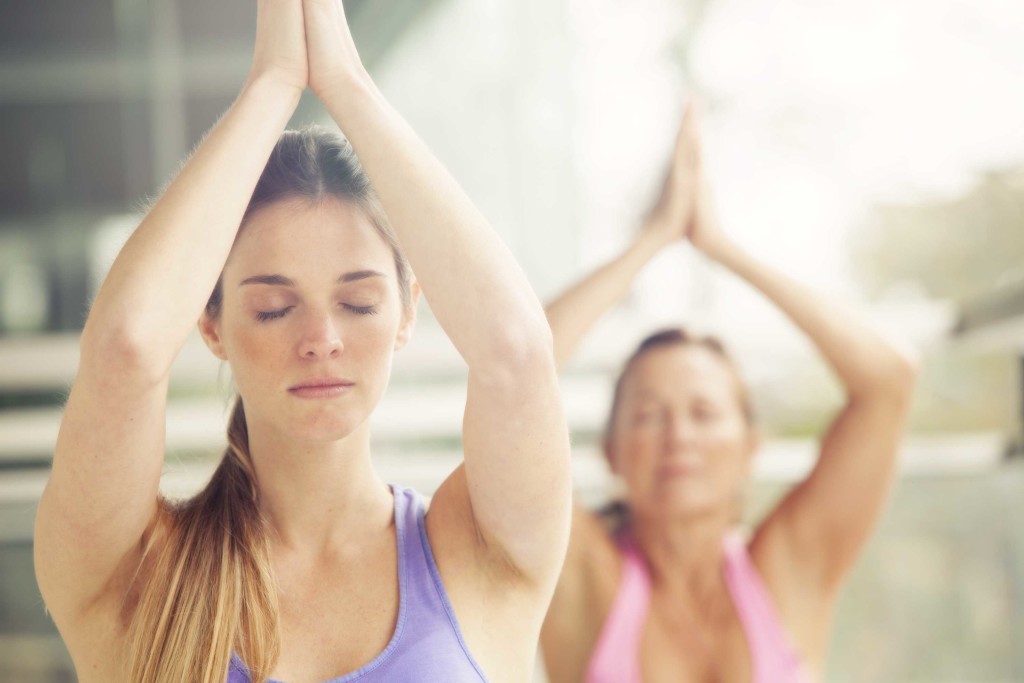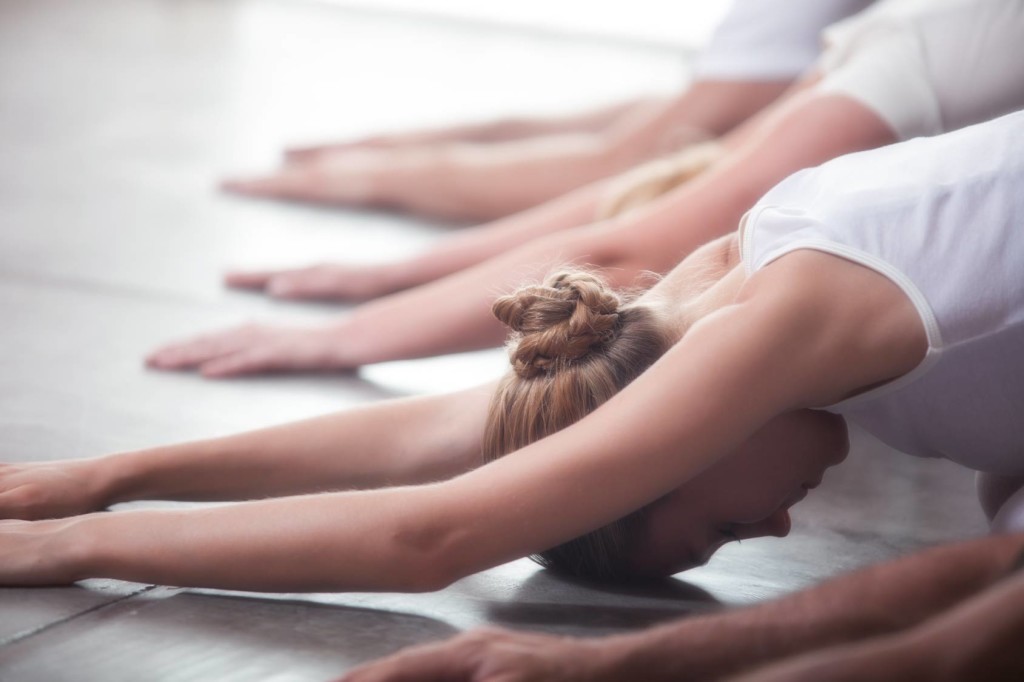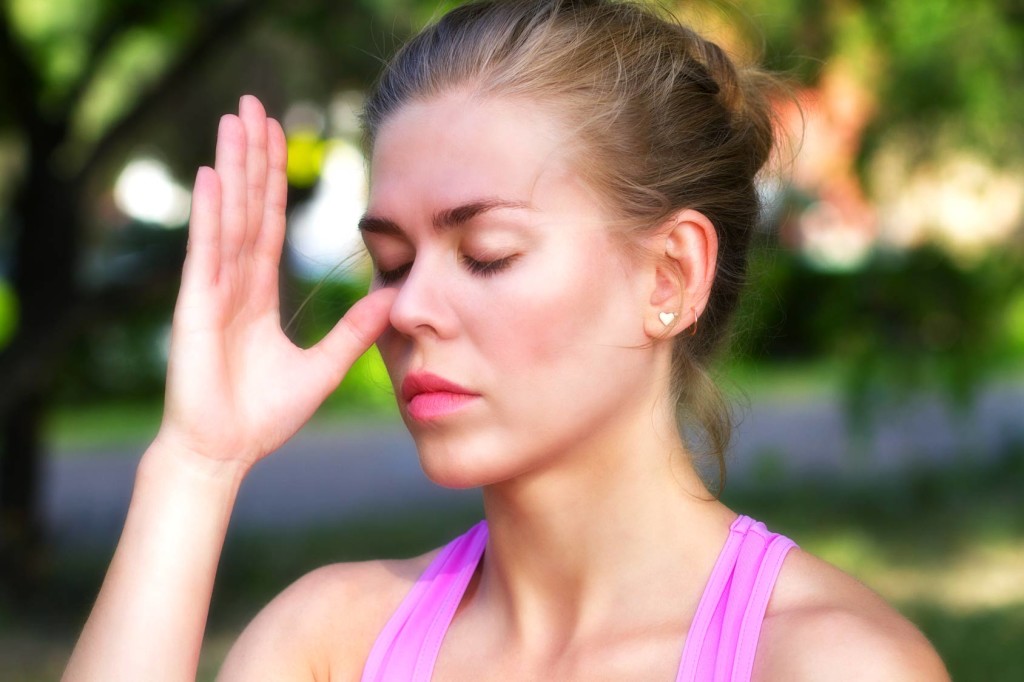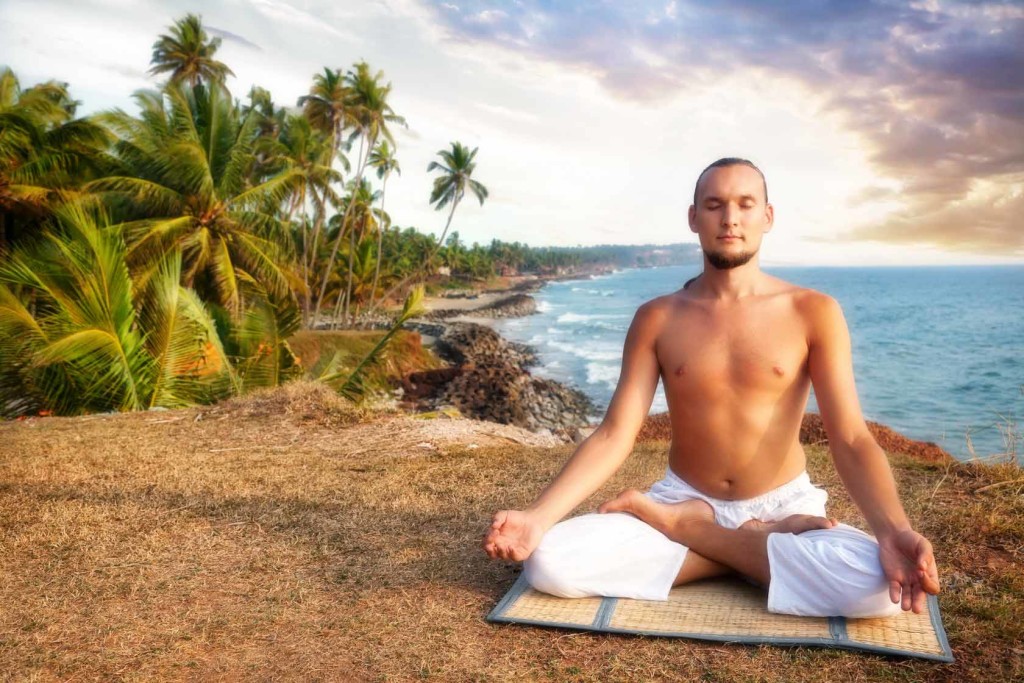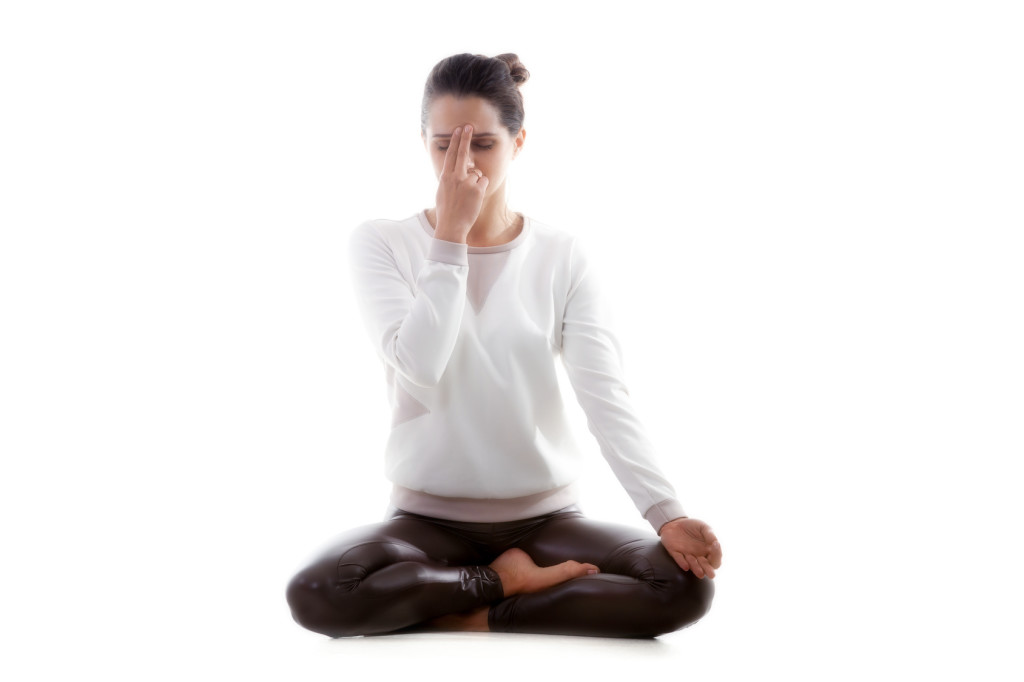Did you know that the English word “spirit,” has it’s roots in the Latin wordspiritus – which means “breath”?
We find a similar connection between breath and Spirit in many other languages. The Hebrew word ruach means “spirit, wind, breath, and/or mind.” The Greek pneuma, as well, means “air, breath, soul, vital force.”
The Sanskrit word prana refers to both the breath, and the cosmic life force that permeates the universe. The ancient Hindu sages developed the yogic discipline of pranayama (“breath extension”), a series of breathing exercises designed to work with this Divine, life-giving energy.
And they aren’t the only ones. Many other cultures, like the Tibetans, the Sufis, and shamanic societies around the world, developed their own sacred breathing techniques, as a way to enter visionary states, and access spiritual dimensions.
What is this primal connection between breath and Spirit? How can breathing exercises help us to deepen our meditation practice, and experience spiritual awakening and transformation?
Let’s take a look…
Meditation & Breathing
In any meditation training, one of the first things the instructor will do is bring your attention to your breath. It’s the primary focus to which you return, again and again, whenever the mind strays. Indeed, some methods of meditation consist of nothing but observing the breath.
Breathing is central to meditation practice for several reasons:
- It engages both mind and body
- It gives you an immediate and tangible object of focus, an anchor to keep you centered
- It develops focus and concentration
- It keeps you rooted in the present moment
- It relaxes your body
- It calms the mind and emotions
These last two are not as simple as they appear. That simply breathing can change our heart rate and metabolism, our mental and emotional state, offers us a significant clue.
If we can understand this, we are one step closer to understanding the power of the breath, and it’s important role on the spiritual path.
Breath & Consciousness
Breathing is one of the only automatic functions of the body that we can consciously control. For instance, we cannot will our heart to beat, or control the function of our glands, or our digestive system. But we can control our breath, make it faster or slower, even stop it altogether for a time.
Yet, when we stop focusing on it, our lungs keep breathing just the same.
That’s because breathing is run by the automatic nervous system (ANS), which also regulates those other important, but unconscious, vital functions (glands, digestion, circulation etc.) that we cannot control. Here’s the key: because our lungs are hardwired to the ANS, we can affect all those automatic, unconscious functions by controlling the breath.
For example, we know that taking slow, deep breaths helps us to calm down. The reason it works is because those slow deep breaths expand the bronchiole tubes in your lungs, which in turn triggers the parasympathetic nervous system(PNS), whose job it is to constrict them again.
The PNS is the part of your nervous system designed to conserve energy. When activated, it not only constricts those bronchioles, it decreases your heart rate, increases blood flow to the digestive tract, and generally makes you feel safe and mellow.
But the power of conscious breathing goes far beyond mere relaxation. By accelerating your breathing, and increasing your air intake, you induce changes in your body chemistry. Your blood becomes heavily oxygenated, as carbon dioxide levels drop. This often causes tingling sensations and other physical symptoms.
It can also induce powerful altered states of consciousness.
These altered states vary tremendously, based on the individual, the method, the set and setting, and other factors. But they are often deeply healing and therapeutic, and involve processing repressed emotions and traumas, confronting addictions, problematic behaviors, and other personal issues.
Life changing epiphanies are not uncommon.
Occasionally, these breathing exercises can produce visionary states, spiritual experiences of profound meaning, beauty and connection – up to and including the ultimate mystical experience of union with God, being at one with the universe.
Now the ancient connection between breath and Spirit is starting to become clear, eh?
7 Breathing Exercises To Deepen Your Meditation Practice
Using breathing exercises in order to achieve personal healing or visionary states is often referred to generally as breathwork. And it can be the perfect aid to your meditation practice.
I have put together these 7 breathing exercises, from sources both ancient and modern, which you can learn to do at home. Some are easy and gentle – others are extremely powerful. Try them all and see what works best for you!
1. Alternate Nostril Breathing
This basic technique is inspired by the yogic discipline of pranayama.
While sitting in meditation, raise your dominant hand up in front of your face, and rest the other hand on your knee. Place your thumb against the side of your nose; gently, but firm enough to block the air flow on that side. Then breathe in through the open nostril.
Now remove your thumb, and use your forefinger to close off the opposite side. Exhale, then breathe in again. Remove your finger, and block the thumb side again. And exhale.
The idea is to breathe in one side of your nose, and breathe out the other, and keep alternating. Your breathing should be easy and natural, not forced.
This practice is very effective at calming the mind, doing away with random thoughts, and bringing your attention fully into the present. It is an excellent way to begin your meditation session, or a perfect way to warm up and prepare for another, more demanding, breathing exercise.
2. Breath Observation
This method is perhaps the simplest of all – deceptively simple.
To practice, all you do is observe the breath without altering it in any way. Close your eyes and focus all your awareness on your nose. Breathe in and out naturally, through your nostrils, and feel each inhalation and exhalation as it passes in or out.
Don’t count your breaths, don’t hold your breath, don’t try to breathe any slower, or faster, or deeper than normal. Just watch.
That of course, is the challenge. The mind will wander this way and that, and you will constantly catch your attention straying from the breath. But the more you practice, the steadier your focus, and the easier it becomes.
If you stay with it long enough, eventually all your thoughts will fall away, and you will experience the profound silence and stillness of pure consciousness – your true nature.
3. Ocean Breath
This is another easy, gentle exercise, inspired by a yogic breathing technique.
To practice, take long, slow, deep breaths through your nose. With each inhalation, fill your lungs to capacity, expanding your belly and diaphragm to take in as much air as possible. Then slowly exhale, gently contracting the muscles in your abdomen to remove every last bit of air.
When done correctly, each breath should make a sighing or hissing noise, like ocean waves rolling and crashing into the shore, and then receding. You can even visualize this in your mind, if you like. Or simply focus on your breathing.
This exercise quickly creates a state of deep relaxation. If practiced for a greater length of time, your sense of self can fall away completely, as you feel the prana, the cosmic energy of the universe flowing through you, ebbing and flowing like the tide… and realize that you are one with it.
4. Relaxing Breath
This practice, developed by Dr. Andrew Weil, is also called “4-7-8 Breath.” You’ll see why in a moment. He calls it “a natural tranquilizer for the nervous system,” and an effective way to deal with all sorts of stress, anxiety and tension.
It even helps you fall asleep!
It’s easy to practice. Start by placing the tip of your tongue against the roof of your mouth, just behind your front teeth. Now inhale quietly through your nose, while silently counting to four; hold your breath to count of 7; then exhale noisily through the mouth to a count of 8.
How fast or slowly you count isn’t as important as how steady you count. It’s the ratio of 4:7:8 that’s important. When you first start, you might wish to count somewhat quickly. As you become more comfortable, you can count more slowly, taking fuller breaths and holding them longer.
5. Cleansing Breath
Close your eyes, and take a deep breath in through your nose. As with the Ocean Breath method, you want to fill your lungs to capacity, expanding your chest and belly.
But this time, as you breathe in, visualize the air you breathe as a pure, white, life-giving energy. See it filling you up, from head to toe. Feel it flowing through your body, bringing new life and energy to every cell.
When you’ve taken in all the air you can, hold your breath for as long as it’s comfortable – anywhere from 3 to 10 seconds should do it (or longer, if you’re a professional swimmer, or a pearl diver, or something).
During that time, imagine that this pure white light is healing and cleansing your mind and body. Wherever there is any pain or tension, any blockage, any illness or imbalance, any fear or negativity, feel it cleansed and purified by your breath, by the pure prana energy.
Now exhale slowly through your mouth, and visualize it as a dark cloud of toxins and painful emotions. All your stress, anger, frustration and sadness, everything you want to release and let go of, it all comes spilling out with every exhalation.
See it. Feel it. Make it real.
Repeat this process as long as necessary, until you see yourself healthy and radiant and filled with pure love. This exercise can leave you feeling tremendously rejuvenated, peaceful and happy and light as a feather.
6. Fire Breath
This powerful technique is inspired by different yogic breathing practices from both the Hatha and Kundalini yoga traditions.
It is easy enough to begin. Breathe in and out through the nose, quickly and forcefully. There should be no pause between breaths, but rather a fast, steady, unbroken rhythm. When done properly, you should feel the muscles of your diaphragm working quickly in and out, like a bellows.
It sounds simple, but it can be very challenging to maintain this technique for any length of time. Your diaphragm my start aching, you may feel short of breath, you might just feel silly or bored and want to quit.
And that’s okay. Listen to your body, and don’t push yourself too much, too fast.
Working with this technique for even a short time will leave you feeling alert, energized, and ready for anything.
But with time and discipline, you can learn to break through that resistance, and ride the Fire Breath into powerful altered states of consciousness, where healing, and rebirth, and mystical union with the Divine, and all that good stuff happens…
7.Shamanic Breathing
Inspired by various modern methods of breathwork, this technique is easier to do than the Fire Breath, but just as powerful – especially when accompanied by shamanic drumming, or other high-tempo, rhythmic, trance-inducing music.
Find a safe and comfortable place, preferably an inner room where you can turn off the lights and enjoy deep darkness. Turn on your music of choice, lie down and close your eyes.
Breathe in and out through both your nose and mouth, to maximize air intake. And simply breathe deeper and faster than you normally would. Exactly how fast is up to you. But the faster your breath, the quicker you will start to feel the effects.
What effects, you ask?
Well, tingling for starters. Then perhaps some mild trembling or muscle contractions. You might also feel a sudden, powerful and unexplainable surge of emotion – anger, sadness, pain, etc. – that can be overwhelming. Or you might start to tune out, get bored and sleepy.
All of these are different forms of resistance.
Resistance to going deeper into the psyche, and facing buried memories. Resistance to letting go of the ego, letting go of control, and surrendering to something bigger, something beyond. This resistance can be so intense that many people need a trained coach to guide them through it.
But once you break through, you enter a whole new world, of infinite possibilities.
I can’t tell you exactly what you’ll experience, or even whether it will be pleasant and enjoyable, or painful and frightening. But I can tell you this:
It will be exactly what you need for your healing, personal growth and spiritual awakening.
Because your soul knows – and it won’t let you down.


